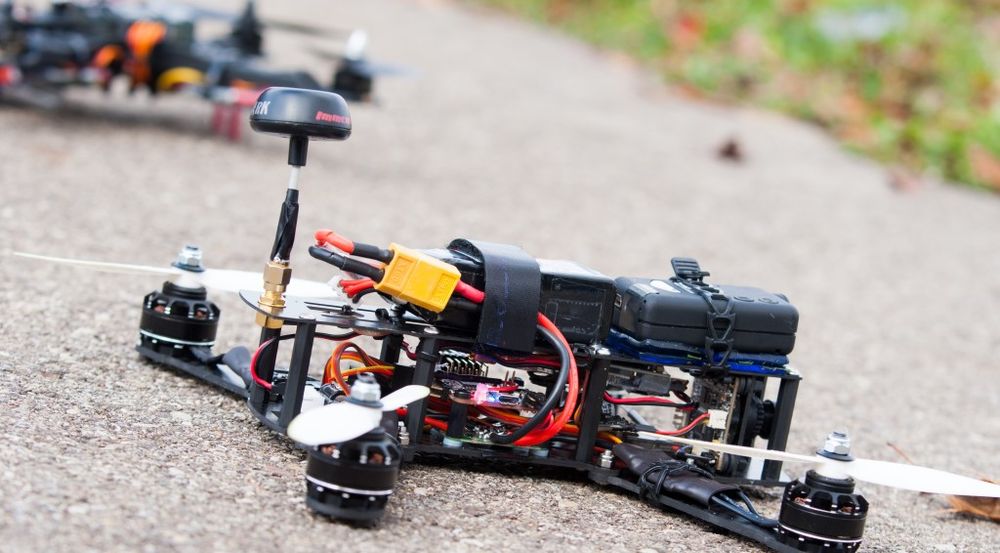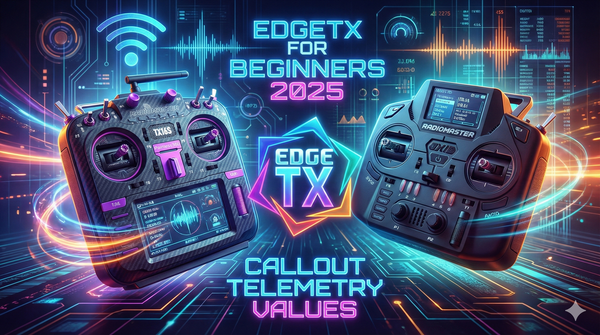Powering your flight controller is an important aspect when it comes to building your own drone, if you get this wrong you might experience some release sparky the blue smoke monster.. Or worse you could end up having a power failure mid flight, damaging more than just your flight controller. In this guide I will discuss some things to think about when it comes to powering your flight controller.
Powering Options
There are several methods you can consider when it comes to powering your flight controller which are each discussed in more detail below:
- Directly from a Battery
- Using your ESC (electronic speed controller)
- A voltage regulator, also known as a BEC (battery eliminating circuit)
- Power Module or Power Management Unit
Powering directly from your battery
This would seem like the most obvious method for powering your flight controller, however there are actually very few flight controllers on the market today that you can power directly with your battery.

In general its safe to assume that you cannot power your flight controller directly from your battery
Most electronic devices run on either 5V or 3.3V, and a typical battery you would use on your drone would be at least 11.1V. Check out or LiPo Battery guide for more info about batteries. Although a flight controller can be designed to have a built in voltage regulator, having a regulator step down such a high voltage often introduces extra heat, or other electromagnetic interference which can cause issues with some of the sensors on your autopilot such as the compass sensor. So its often better to keep this off the autopilot board to improve performance. Always check your documentation or the actual flight controller PCB (printed circuit board) to ensure you feed it with the correct voltage. Using a higher voltage will fry your board.
Using your ESC to provide power
Perhaps one of the more common methods for powering flight controllers, particularly on simpler quadcopter builds to directly via your ESC as most ESC’s include a built in voltage regulator (known as a BEC) to provide a constant 5V output. However there are a few things to consider if you plan to power your flight controller via your ESC. Almost all flight controllers can be powered via your ESC, but there are a few special outliers that cannot so its a good idea to check the documentation of your flight controller.
If you dont know what an ESC is, then its a good idea to check out our ESC guide for more details on what an ESC is, and what it does.
- Is the BEC in your ESC a switching or Linear BEC? – Without going into technical details on how BEC work, you just need to know you get two types, switching or Linear. If ESC uses a switching regulator there is a chance that they can cause interference/ power issues with one another (if using more than 1 ESC like on a quadcopter). So you will need to remove the red wire from each of your 3 pin ESC connectors so that only one ESC will power your flight controller. If your ESC use a Linear BEC then you dont need to do this, but I would suggest that if you are not certain what BEC your ESC uses you should take the red wire out of the connector just to be safe, as you dont want a simple power glitch to cause your quadcopter to crash.
- OPTO ESC – ESC only has two wires – Because of the possible power issues mentioned above, many multirotor specific ESC’s dont actualy have any BEC at all, and are called OPTO ESC (explained in our ESC buying guide). These ESC’s are popular with multirotor drone buildings since we dont need to remove the red wire, and the fact that the ESC dont have a BEC means they are much smaller, cheaper and lighter. An easy way to spot an OPTO ESC is that the servo connector only has two wires. However if your quadcopter only uses OPTO ESC’s you cannot power your flight controller via an ESC since none of them supply any output voltage. So we will need to use another method as described below.
Using a voltage regulator
Also known in this hobby as a BEC, a voltage regulator will convert your battery voltage down to a clean and constant 5V to supply power to your flight controller. There is no difference between a BEC and a voltage regulator As discussed many moderns multi-rotor ESC’s dont have any voltage regulator so you often need to use a separate BEC to power your flight controller. However this is not realy a bad thing thing since with most FPV drones you will need to power your FPV camera and transmitter with a separate power source anyway. Again you have a few options when it comes to powering your flight controller via a voltage regulator.

- Using an individual voltage reguator/BEC – Powering your flight controller via an individual BEC is an effective method since 5V voltage reguators are tiny and cheap devices. You will need to connect the inputs of the voltage regulator to the same circuit as your battery voltage, and the outputs will connect to the 5V, and ground inputs on your flight controller. There are a variety of voltage regualtors available on the market some a large, others are tiny. Some voltage regulators output a fixed voltage, such as 12V or 5V. But you are get variable voltage regulator that let you adjust the output by rotating a knob.
- Using a PDB – some power distribution boards include a built in voltage regulator which is very convenient when building your drone. This allows you to solder your ESC power leads and battery connector directly to the board for a neat installation. The board will include some extra electronic components to have a section that will output a constant 5V output, and many also include an extra 12V output. You can then use the 5V output to power your flight controller, and the extra 12V output can be used to power your FPV equipment, or LED lights etc.. Some PDB units also have a switch that let you turn the regulator on and off which is designed to connect your LED’s lights to so you can turn them on and off easily. Some PDB boards can be quite complex such as the ZMR PDB V2.1. In addition to providing a neat way to route power around your quadcopter the ZMR PDB can also include other circuits for powering your FPV cameras, a low battery voltage alarm, and LED circuitry.

Using a Power Module
Many of the full autopilot systems such as Pixhawk, come with a dedicated power module. In addition to providing a clean 5V power supply for your flight controller a power module often includes a few extra electronics to include a current and voltage sensor. These are particularly useful since it allows your autopilot to monitor your battery so it knows how much power it has left. Many autopilots such as the Pixhawk have a failsafe built in that will land or return home to the takeoff location if it detects that the battery capacity is low.
A power module will often connect directly to your battery and its output would go onto connect with your power distribution board. Because a power module will measure the battery current its important that you connect it the correct way around as the current needs to flow through the power module in a specific way.
Check the current
Because all the power routes through the power module, all the electricity that goes to the motors will need to pass through the power module. So if you are using lots of motors (hexacopter) or very large motors you need to ensure your power module will be able to handle the current, otherwise you can burn out your power module. The default pixhawk power module can handle 90A. To learn more about current draw on your drone check out our guide on choosing multicopter motors.
Check the polarity and Voltages
Now that you know the basics of powering any flight controller one of the last things you should check is the polarity. What I mean by this is that you make sure to connect the positive voltage wire (often red) onto the positive pin on your flight controller, and the ground wire (often black) to the ground pin on your controller. Although many boards have reverse polarity protection, not all of them do and if you connect power the wrong way around you can fry your board, and also void any warranty.
The same applies for voltages, every electronic device is rated to work with a certain range of voltages, for example most miniquad ESC’s work with 3S or 4S LiPo batteries, so its important to make sure that you dont connect a battery that has a higher voltage than what your ESC / voltage regulator / power module can handle. As an example of this, look at the image of an ESC that I soldered the wrong way around on my PDB, it ended up completely melting a wire!
So thats it, hope this guide has helped you learn abit more about the drone hobby and that you will never have any issues powering your flight controller. If you have any questions, suggestions or storied of you burning something up, just share it in the comments below.











